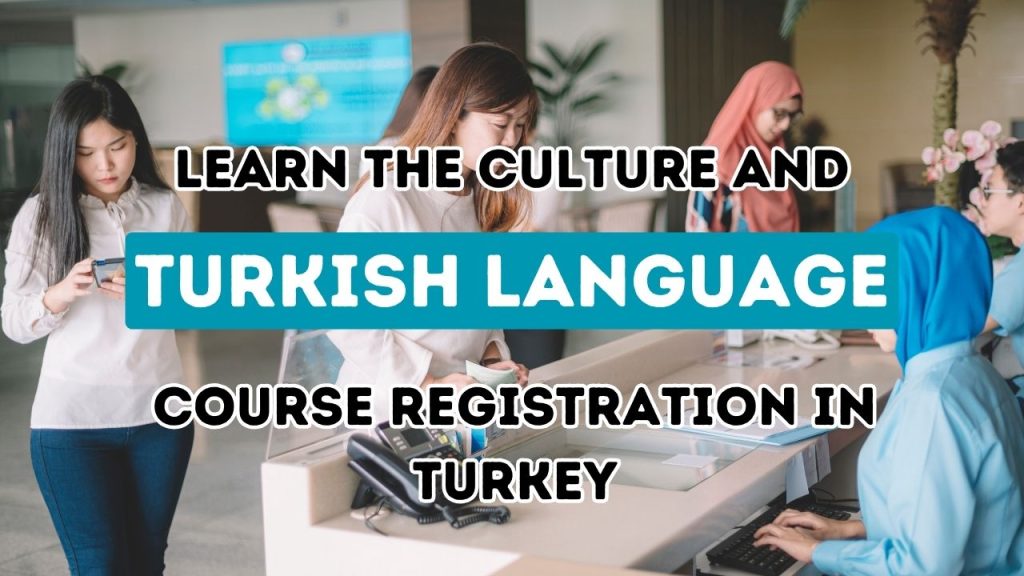Integrating Turkish culture into language learning offers a unique approach that enhances comprehension and retention. Cultural influence plays a pivotal role in mastering a new language. By understanding the subtleties of Turkish culture, learners gain context, making new words and phrases come alive. This isn’t just about vocabulary; it’s grasping the spirit behind the words. Turkish language benefits learners by offering insights into a civilization rich in history and tradition. With the importance of culture in education, appreciating Turkish customs can deepen linguistic proficiency. Language learning tips suggest immersing yourself in actual cultural settings for better understanding, a strategy that bridges gaps between textbook knowledge and real-world application. Engaging with the traditions, stories, and idioms of Turkish society not only enriches the learning experience but also fosters a sense of connection and belonging in learners. So, why not let Turkish culture in language learning be your guide on this linguistic journey?
Exploring the Interconnection Between Culture and Language Acquisition
Turkish culture in language learning serves as a bridge between mere memorization and heartfelt understanding. Imagine reading a Turkish poem; the rhythm feels different when you know the cultural layers behind its words. It’s like peeling an onion—each layer revealing more depth. The cultural influence on language opens learners’ eyes to the nuances and emotions embodied in expressions. Language learning tips often emphasize context, and Turkish culture provides just that, unveiling stories that words alone can’t convey. The importance of culture in education becomes evident as learners tap into these cultural layers, enhancing not just vocabulary, but fluency in thought. Turkish language benefits become clearer as learners engage with traditions and values, making language acquisition less mechanical and more meaningful. Through culture, language isn’t just taught; it’s felt, understood, and lived, transforming learning into a vibrant journey rather than a static task.
Exploring the interconnection between culture and language acquisition reveals a tapestry where each thread is vital. When learners delve into Turkish culture in language learning, they unearth a treasure trove of insights. These are fundamental because they shape the way language is grasped and used. Suddenly, a seemingly simple phrase is colored with emotions and traditions. This interconnection underscores the cultural influence on language. Language learning tips push for immersion, advocating for learners to breathe in the culture. By doing so, the Turkish language benefits shine, not merely in words mastered but in experiences lived. The importance of culture in education becomes palpable, offering an immersive backdrop against which language acquisition unfolds. It’s not just about language; it’s a living, breathing exploration of ideas, emotions, and shared understanding. Learners find their linguistic journey interwoven with Turkish society’s rich narrative, transforming not just how they speak, but how they perceive the world.
Navigating the fusion of Turkish culture in language learning reveals a powerful synergy. Consider a traditional Turkish tea ceremony. Engaging in this ritual provides more than just social niceties; it enriches vocabulary with cultural undertones. This illustrates the cultural influence on language, where gestures and phrasing acquire deeper connotations. One of the key language learning tips is embracing cultural practices, spotlighting how the Turkish language benefits from contextual immersion. Delving into these cultural practices highlights the importance of culture in education, framing language not as a static set of rules but a dynamic story waiting to be told. Each encounter with cultural elements adds layers to comprehension, making language acquisition an engaging process. Learners don’t just learn; they experience, feel, and connect, weaving cultural narratives into their linguistic fabric. Such an approach ensures that this journey is not only educational but also profoundly transformative.
The Influence of Turkish Traditions on Language Proficiency
Turkish culture in language learning serves as a bridge to deeper language proficiency. The vibrant tapestry of Turkish traditions subtly weaves itself into daily conversations and expressions. Imagine sipping tea at a bustling café in Istanbul, where phrases take on flavors as rich as the brew. Language learning tips often emphasize immersion, and what better way than living the culture? As learners embrace the rhythm of Turkish customs, they discover the heart of its language. Cultural influence on language goes beyond words; it shapes tone, emotion, and context. Embracing Turkish traditions, from heartfelt greetings to festive celebrations, provides learners with a toolkit. This is where the importance of culture in education truly shines. By understanding these nuances, learners elevate their skills, moving from textbook exercises to real-life interactions. Turkish language benefits are vast, offering learners more than linguistic knowledge, it’s a profound connection to a vibrant culture.
Turkish traditions breathe life into the language, guiding learners toward proficiency as if offering a hand to a friend. Picture a warm family gathering during a traditional Turkish festival. Here, embedded customs and stories lead to understanding words beyond their surface value. Language learning tips advocate for diving into such cultural wells, where vocabulary swells with emotion and meaning. Cultural influence on language is evident as learners absorb phrases rich with heritage and intent. Engaging with these elements offers Turkish language benefits, seamlessly linking learners to its heart and history. Emphasizing the importance of culture in education, we see this dynamic dance between tradition and language shaping mastery. Learners find themselves not just speaking, but feeling the language, each exchange an echo of centuries past. Embrace Turkish traditions as your language compass, directing you to the deep ocean of linguistic proficiency and cultural appreciation.
Turkish traditions offer a compass, guiding learners to depths of language understanding with rooted cultural influence on language. Consider the sweet melodies at a wedding or the rhythmic sway of dancers, each step a language lesson in disguise. Language learning tips highlight the dance of tradition and dialogue, unveiling Turkish language proficiency that feels as natural as breathing. The symphony of Turkish customs echoes within each sentence spoken, be it a heartfelt story or a gentle lullaby. The importance of culture in education emerges vividly here, where every idiom and expression blossoms with historical nuance and warmth. Learners find Turkish language benefits expanding beyond mere words, diving into the soul of communication. Enchanting and vivid, Turkish traditions craft a roadmap for language mastery, akin to painting with shades of the past. This approach connects learners deeply, transforming Turkish culture in language learning into more than just educational—it becomes a lifelong journey.
Strategies for Integrating Cultural Context in Language Education
Integrating Turkish culture in language learning offers nuanced strategies that breathe life into the learning process. Absorbing cultural context isn’t just a bonus; it’s the secret sauce in the recipe of effective education. For instance, understanding Turkish customs and daily practices enriches comprehension and retention significantly. Why settle for bland textbook definitions when you can experience language as it pulses through the streets of Istanbul or whispers through the ancient mosaics of Hagia Sophia? Learning tips often recommend engaging directly with culture to awaken curiosity and promote a more profound grasp of language nuances. This approach isn’t merely academic—it’s about weaving an intricate tapestry where Turkish language benefits shine through with clarity. As traditional Turkish stories and idioms unravel in lessons, they highlight the importance of culture in education, transforming rote memorization into genuine understanding. Embrace the cultural influence on language and watch your proficiency soar beyond mere words.
Immersing oneself in the rich tapestry of Turkish culture in language learning is like adding vibrant hues to a once monochrome canvas. One strategy to achieve this is through interactive language immersion. This involves more than glancing at history; it means diving into Turkish life through music, cinema, and culinary arts as suggested by various language learning tips. These activities don’t just teach words; they instill meaning through experience. Picture a lively conversation about the delicate art of crafting Turkish coffee or the melodic tunes of a popular Turkish folk song. Such experiences add depth to vocabulary and pronunciation, embodying the cultural influence on language. Also, engaging with native speakers via exchange programs or online platforms bridges textbook boundaries, enhancing fluency by weaving emotion and context into learning. Most importantly, this method underscores the importance of culture in education, making abstract concepts tangible and personal, which are key Turkish language benefits.
A brilliant strategy for weaving Turkish culture in language learning is incorporating traditional arts and crafts alongside the lessons. Why stick to the ordinary when you can delve into the extraordinary world of Turkish artistry? Picture the intricate patterns of a Turkish carpet guiding you through the complexities of new expressions. By engaging with crafts, learners physically interact with the language, creating a bridge between abstract concepts and tangible experiences. This method naturally unfolds the importance of culture in education, bringing history and language to life. Furthermore, interactive workshops focusing on crafts offer language learning tips that nurture creativity and foster cultural appreciation. Seeing Turkish culture in language learning as more than just words on paper can significantly increase Turkish language benefits. It promotes deeper connection and long-term retention, ensuring the cultural influence on language becomes an essential tool in your linguistic arsenal. So, grab a paintbrush or weaving loom, and let traditional art lead your learning adventures.





